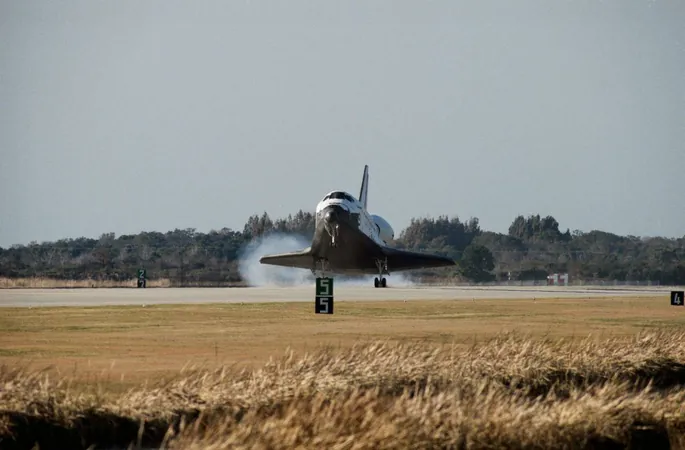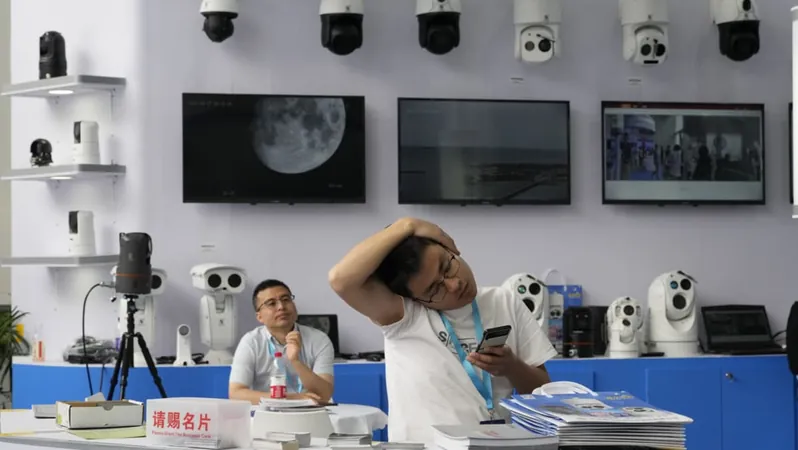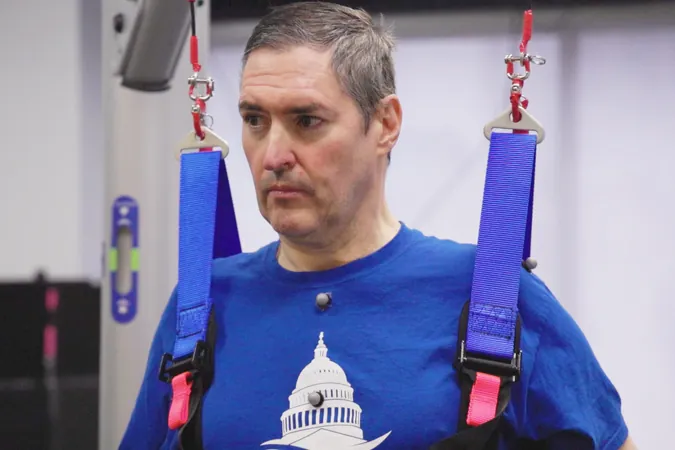
Marking 40 Years Since NASA's Groundbreaking DOD Shuttle Mission: A Look Back and Forward
2025-01-28
Author: Yu
40 Years of NASA's DOD Shuttle Mission
On this day, we commemorate a significant milestone in space history: it has been 40 years since NASA executed the first dedicated Department of Defense (DOD) Space Shuttle mission. This operation, which took place on January 24, 1985, marked a pivotal moment for both NASA and the military as they ventured into new realms of classified space activities.
The Mission and Its Crew
The mission, conducted aboard the Space Shuttle Discovery, spotlighted a crew of five seasoned astronauts. Commanded by Apollo veteran Thomas “TK” Mattingly, the crew aimed to deploy a satellite into geostationary orbit using an Inertial Upper Stage (IUS). Mattingly was no stranger to challenges, having been removed from the Apollo 13 mission due to illness but later flying on Apollo 16 to successfully land on the Moon.
Joining him on this top-secret mission were pilot Loren Shriver, mission specialists James Buchli and Ellison Onizuka, and Gary Payton, acting as the payload specialist under the auspices of the U.S. Air Force. The mission's classified nature meant that details were closely guarded, with even the launch time remaining a secret until just nine minutes before liftoff.
Challenges and Reflections
However, the mission’s success wasn't without hindsight reflections on the looming dangers of space travel. Following the launch, engineers raised alarms after discovering issues with the O-ring seals on the Solid Rocket Boosters (SRBs). These seals, designed to prevent the escape of hot gases, had exhibited significant erosion warrants that would later echo through the catastrophe of the Challenger disaster just a year later.
The launch had initially faced delays due to unseasonably cold weather, raising concerns of ice forming on the external tank. Still, it was the freezing temperatures at the launch site that rendered the O-rings vulnerable and brittle, ultimately contributing to the erosion issues identified during post-launch inspections. Unfortunately, these same conditions were present for the Challenger launch in January 1986, leading to a fatal tragedy that shocked the world.
Looking Forward
As we reflect on this mission, it reminds us not only of the risks associated with space exploration but also of the immense technological and human achievements that have followed since. NASA has continued to push the boundaries of what is possible in aerospace technology, leading to groundbreaking projects like the Hubble Space Telescope, which, despite facing its own challenges, has returned unparalleled views of the cosmos.
This anniversary serves as a stark reminder: with every mission into the unknown, we must always prepare for the unexpected. Space exploration remains one of humanity's most daring endeavors, and lessons learned from past missions guide the future of safe travel beyond our planet.




 Brasil (PT)
Brasil (PT)
 Canada (EN)
Canada (EN)
 Chile (ES)
Chile (ES)
 Česko (CS)
Česko (CS)
 대한민국 (KO)
대한민국 (KO)
 España (ES)
España (ES)
 France (FR)
France (FR)
 Hong Kong (EN)
Hong Kong (EN)
 Italia (IT)
Italia (IT)
 日本 (JA)
日本 (JA)
 Magyarország (HU)
Magyarország (HU)
 Norge (NO)
Norge (NO)
 Polska (PL)
Polska (PL)
 Schweiz (DE)
Schweiz (DE)
 Singapore (EN)
Singapore (EN)
 Sverige (SV)
Sverige (SV)
 Suomi (FI)
Suomi (FI)
 Türkiye (TR)
Türkiye (TR)